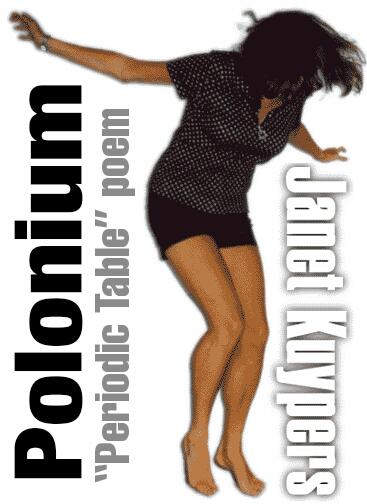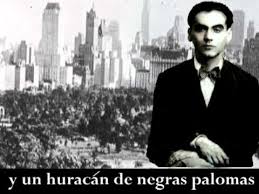Polonium
Janet Kuypers

from the “Periodic Table of Poetry” series (#084, Po)
including the poem “Eyes are Blurred to the Battlefield”
8/11/13
On the Indonesian island Jawa
large turtle skeletons
litter the plains,
because after the turtles
came in from the ocean
to lay their eggs,
swarms of wild dogs there
got together and
pounced.
Those wild dogs flipped the turtles over,
and stripped them completely
from their shells
before they ate them alive.
Because we have to remember
that life is a constant
avoidance of death:
since later on, many of those wild dogs
who killed the turtles
were prey to the tiger,
who later pounced upon them.
This is the cycle of life,
because every birth
is a prelude to death.
Remember this.
Don’t forget.
#
Keep in mind that elemental Polonium
changes in a nuclear reactor
to form Polonium-210…
Because the former Russian agent
Alexander Litvinenko
was the first man
to be poisoned to death from lethal
Polonium-210-induced
acute radiation.
So yes, because life is a prelude to,
and a constant avoidance
of death,
this Polonium-210 poisoning marked
the beginning of an era
of nuclear terrorism.
#
I know, I know, this is only
a part of Polonium,
and they found
that Polonium’s electrical conductivity
changes with it’s temperature,
making it perfect
for eliminating static electricity.
And because of it’s
short half-life,
it’s decay generates heat, so it’s a
convenient and light source
to generate
thermo-electric power in space
satellites and lunar stations —
because it’s great
that for space no moving parts
are required for power
from Polonium.
Yes, I know it’s radioactive,
Marie Curie discovered
Polonium
(named for her homeland Poland),
she even coined the phrase
“radioactivity” while
working. She even worked so diligently
that on her own wedding day
she wore a black dress —
because she could then wear it
for the work she later
had to do.
#
Marie Curie wore a black dress
to her own wedding;
maybe she knew
that life is a constant avoidance
of death. Life is just
a prelude to death,
because though Polonium otherwise
seems like a relatively
harmless element,
Polonium-210 can still be used
as just the right element
for nuclear terrorism.
#
With Polonium, there’s much to learn.
Because when alloyed,
it can be
a portable neutron source, Polonium
is even used in making
photographic plates.
But then again, Polonium’s
the only component
of cigarette smoke
found in lab rats to produce cancer.
Polonium was produced
in World War II’s
Manhattan Project — it was even
part of the design of the
Fat Man bomb
on Nagasaki. Yeah, Polonium
has many good qualities
to us humans,
but kep in mind that life is still
a constant avoidance
of death.
So despite what good we look for
in Polonium, this element
can also be
the instrument of death.
Remember this.
Don’t forget.




